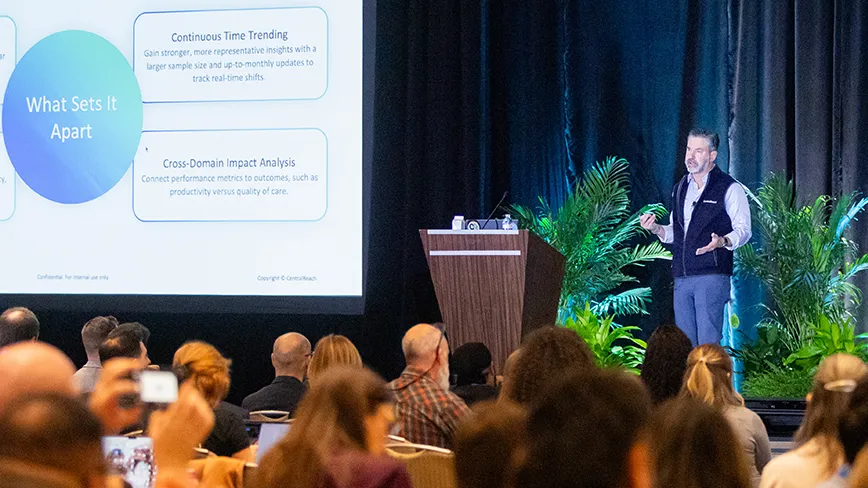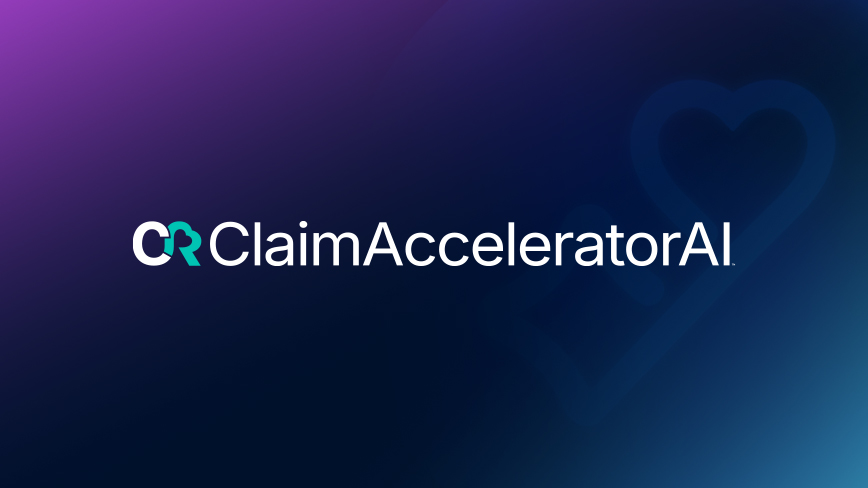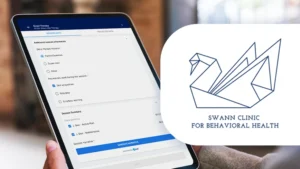By Nissa Van Etten, Ph.D., BCBA, LBA, and Manager of Assessment and Clinical Training at CentralReach
As a Board Certified Behavioral Analyst (BCBA) or special educator, our job is to evaluate children diagnosed with autism spectrum disorder and other developmental delays to create individualized intervention programs geared toward helping them develop the skills they need to participate in family and community activities. There are a variety of assessment tools currently available, however, the time is ripe to re-evaluate the assessment processes and combine the best tools to bring together a large range of skills to evaluate an individual.
Presently, there are three common ways to evaluate people with autism and intellectual developmental disabilities (IDD):
- VB MAPP – Verbal Behavior Milestones Assessment and Placement Program
- ABLLS-R – Assessment of Basic Language and Learning Skills-Revised
- AFLS – Assessment of Functional Living Skills
Each of these assessments have slightly different approaches and are designed to evaluate people of different ages and for different skills. Yet, VB MAPP, ABLLS-R, and AFLS each present challenges individually to accurately assess and create a way forward to support the individuals they test.
Combining ABLLS-R and AFLS is the way forward. Together, these tools can uncover a dynamic image of the individual to clearly show their skills and areas where they need to improve their independence to comfortably navigate their environment. To understand how these tools can work powerfully together, let’s first compare these three evaluation assessments:
VB MAPP
VB MAPP assesses the language and social skills of young learners, who range in age from 2 to 6 years of age. The program evaluates 170 measurable learning and language milestones across three developmental levels (0-18 months, 18-30 months, and 30-48 months). The process has five components and works to provide a baseline level of performance, a direction for intervention, a system for tracking skills acquisition, a tool for outcome measurement, and a framework for curriculum planning.
Central challenges of VB MAPP: While VB MAPP includes the evaluation of a few academic-related skills, the assessment's central focus is language and social skills, often leaving educators in the dark regarding the full range of a child’s academic capabilities. Presently, the VB-MAPP offers an electronic scoring system with access to the VB-MAPP Guide and Protocol. The digital VB-MAPP assessment allows users to chart scores in the assessment as well as populate reports for parents and educators. At this time the VB-MAPP allows for sharing of results across individuals but does not report sharing access to assessment administration. Additionally, the VB-MAPP does not describe types of reports developed for sharing across providers.
ABLLS-R
ABLLS-R uses a vigorous evaluative model for assessing an individual’s academic capabilities. This test is appropriate for children between the ages of 2 and 8 years of age that exhibit delays primarily in language and social skills. Where VB MAPP evaluates 170 measurable milestones, this comprehensive digital tool evaluates 544 skills over 25 domains and offers robust language capabilities. In the clinical space for behavior analytic services, we are often given an 8-12 hour assessment window to work with a new client. The 12-hour assessment includes interviewing the family, meeting and observing the child with an adult, getting an idea of what skills the child possesses, and writing a full treatment plan. While some feel that the ABLLS-R assessment is too extensive, the evaluator can decide whether it is necessary to assess all 544 skills. In addition, the diagnostic evaluation and historical records review can help to determine what is important to the family and where the child may need intervention.
The digital benefits of the WebABLLS digital assessment are the robust reporting and analytic features that allow clinicians and educators to review multiple assessments over time and the impact of intervention on the client's performance from the first assessment to the next. Reporting features offer easy-to-use and administer program and treatment plan updates that are downloadable and shareable with other collaborators. The digital aspect of the test expedites the evaluation and encourages focus on the child, so the evaluator can spend more time interacting with the family, versus manually taking notes. This helps the educator to build a connection and rapport with the family/child.
Central challenge of ABLLS-R: ABLLS-R is best suited for children and while it can be used to test older individuals, it is not common.
AFLS
AFLS is designed for testing people who are age 16 and older and who need to develop independent living skills. This comprehensive test evaluates 1,900 skills and includes basic living skills across six protocols and various environments:
- The Basic Living Skills Assessment
- The Home Skills Assessment
- The Community Participation Assessment
- The School Skills Assessment
- The Independent Living Assessment
- Vocational Skills Assessment Protocol
Compared with ABLLS-R and VB MAPP, AFLS evaluates the most skills and is considered the strongest evaluation tool for older learners. However, the AFLS can be used for both younger and older learners. The diversified questionnaire allows for the assessor to evaluate whichever skills feel most important. For example, while vocational skills might not be relevant for a 2-year-old, AFLS can still be used to evaluate disruptive or socially acceptable behavior. Like ABLLS-R, AFLS is also a collaborative tool that can allow multiple specialists to participate in the evaluation process.
The future of assessments in autism
Each of these assessments was designed to evaluate people at different stages in their lives. To holistically understand an individual with autism or another IDD, it is essential to use an integrated approach that explores a wide range of skills (language, learning, and living), pulls from the perspective of multiple specialists or clinicians, and allows the educator to track data throughout an individual’s treatment plan.
By combining ABLLS-R and AFLS, BCBAs will have the ability to conduct a comprehensive evaluation of a learner and aggregate data so that caregivers can methodically track the individual’s progress over time. This will enable educators to select the skills they want to evaluate, and they think will have the greatest impact on the life of the learner.
When we create treatment plans, our job is to paint a portrait of the client that we are serving; the insurance company does not know who this individual is, so the assessor must act as the artist, and use the data we collect to paint the painting.
Our goal is to help the learner gain the necessary skills to live independently. By taking a fresh look at our evaluation criteria, we can better understand how to help the learner reach their fullest potential.

Nissa Van Etten
Ph.D., BCBA, LBA
Dr. Van Etten is a board-certified behavior analyst and Manager of Assessment and Clinical Training at CentralReach. Dr. Van Etten specializes in training BCBAs in various skill areas including compassionate care and cultural awareness. She also has expertise in developing protocols and curriculums for training individuals pursuing the BCBA certificate, as well as providing quality behavior analytic services to children and families with autism. Dr. Van Etten has experience with ABLLS-R and VB-MAPP assessment tools and she enjoys working closely with school districts, teachers, classroom staff, and families to provide quality educational services utilizing applied behavior analysis for children with autism.






